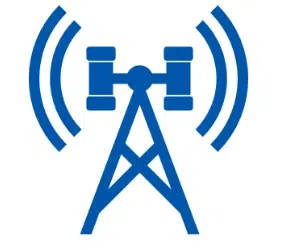The amount of land needed for a cell tower installation can vary widely depending on several factors, including the type of tower, the technology being deployed, local zoning regulations, and the specific requirements of the wireless carrier or tower company. Here are some considerations that can help determine the land requirements for a cell tower:
- Tower Type: The type of tower being installed is a major factor. There are different types of cell towers, including monopole towers, lattice towers, guyed towers, and rooftop installations. Monopole towers, which are freestanding and have a single pole, typically require less land than lattice or guyed towers.
- Technology and Antenna Configuration: The technology generation (e.g., 3G, 4G, 5G) and the antenna configuration (e.g., number of antennas, directional vs. omnidirectional) can influence the size and space requirements of the tower installation. 5G small cell installations, for example, are smaller and more compact than traditional macro cell towers.
- Zoning Regulations: Local zoning regulations and land use ordinances play a critical role in determining land requirements. Some municipalities have specific setback, spacing, and land use requirements for cell towers. Compliance with these regulations can affect the amount of land needed.
- Access and Infrastructure: Cell towers typically require access roads, utility connections (e.g., electrical power, fiber-optic backhaul), and equipment shelters or cabinets. The land should be sufficient to accommodate these infrastructure components.
- Lease Agreement Terms: The terms of the lease agreement between the property owner and the wireless carrier or tower company may specify the land area allocated for the tower installation. Lease agreements can vary, and property owners should carefully review and negotiate the terms.
- Environmental Considerations: Environmental factors, such as wetlands, protected habitats, or archaeological sites, may impact the location and land requirements of a cell tower. Compliance with environmental regulations is essential.
- Future Expansion: Consideration should be given to the potential for future expansion or co-location of additional wireless equipment. Some carriers may seek to add antennas or equipment in the future, which could require additional space.
- Aesthetic and Visual Impact: Local communities may have concerns about the visual impact of cell towers. Towers in certain areas may need to be camouflaged or disguised, which can affect the land requirements.
- Safety and Setback Requirements: Safety regulations may require specific setback distances between the tower and nearby structures, roads, or residential areas. These setbacks can impact the land needed for a cell tower installation.
It’s important to note that the land footprint of a cell tower installation may not be limited to the tower structure itself. The surrounding land may also be used for equipment cabinets, fencing, landscaping, and other site-specific requirements.
To determine the exact land requirements for a cell tower installation, property owners and wireless carriers typically conduct site surveys and assessments, taking into account all relevant factors. Engaging with local zoning authorities and seeking professional advice can help ensure compliance with regulations and efficient use of the land while meeting the wireless coverage needs of the area.
